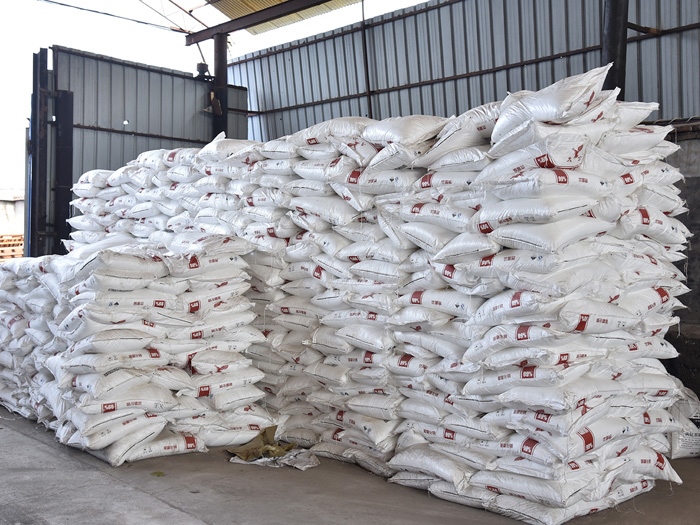Application of soda ash in printing and dyeing industry (1)
Application of soda ash in printing and dyeing industry
1. Water softener:
In order to avoid the formation of water-insoluble calcium, magnesium soap or dye deposits during the printing and dyeing process, appropriate methods can be used to remove calcium, magnesium and other salts in the water. This process is called water softening.
Adding this product to water can make calcium ions or magnesium ions become carbonate precipitates to achieve a softening effect.
2. Erosion agent:
Colored yarn fabrics are made of dyed yarn and unrefined and bleached raw yarn. The ratio of the two varies with the variety. For example, the proportion of colored yarn in the lattice is large, while the proportion of colored yarn in the lattice poplin is much less. Since most of the striped colored yarns in the fabric are dyed with dyes such as vulcanization, reduction, and nautto, the scouring of colored yarn fabrics cannot be done with ordinary cotton.
When these dyes are violently boiled in a high-temperature, high-pressure, strong caustic soda solution, they are easy to dissolve, pollute the white ground, and cause serious color overlap. Therefore, when the lattice and lattice poplin are cooked, caustic soda should not be used, only soda can be used alone, and no pressure should be applied during cooking. On the contrary, it should be carried out in an open cloth cooking pot under normal pressure to avoid peeling off the color of the colored yarn and polluting the white floor.
3. Emulsified scouring agent:
Because raw cotton contains a lot of dust and impurities, it is not suitable for textile engineering, so it must be cleaned frequently before spinning. Generally, soda ash and soap are used to remove fat impurities from wool. In this method, 3-10 parts of soda ash and 2-5 parts of soap are added to 1000 parts of water, then stirred and refined at 45°C, and then washed with warm water.
4. Scouring agent:
Because raw cotton is refined, the purpose of wool and wool fabrics is to remove lubricating oil added during the spinning process and stains during the manufacturing process. The process is much simpler than raw cotton. At 35-40°C, 2-4% soda and 1-3% fabric weight soap are usually used.
5. Scouring agent:
Silk is mainly composed of silk fiber and sericin, with few other impurities and only a small amount of waxy fat. The sericin content is about 30%, and the silk is coated with sericin. Although its chemical composition is similar to silk fiber, its color is lower and it has rough and hard properties. In order to better play the soft and luster properties of silk, it is necessary to remove sericin.
Sericin can be softened and dissolved in hot water containing soda ash. The alkalinity is weak, but the silk fiber is insoluble.


